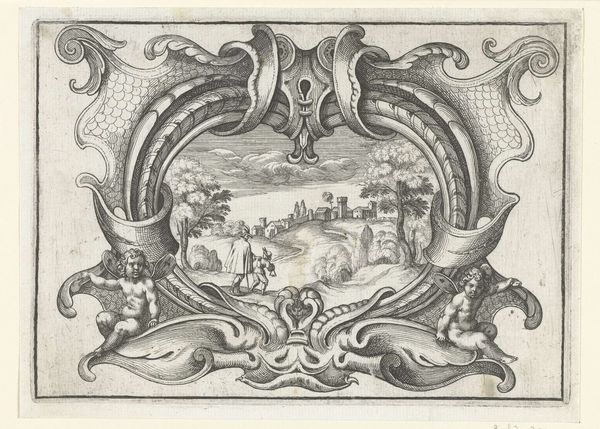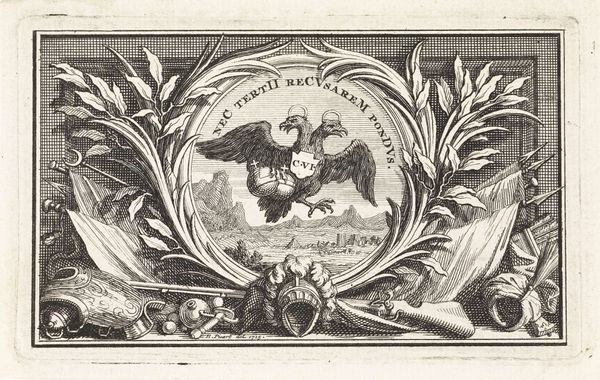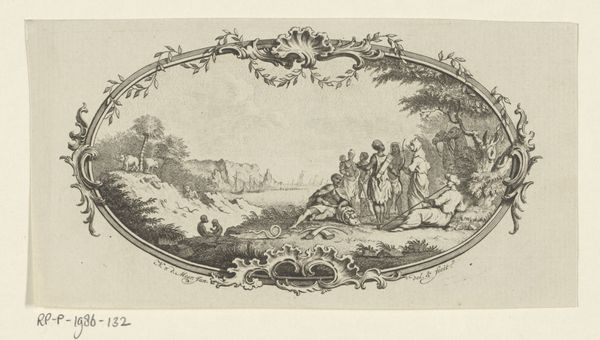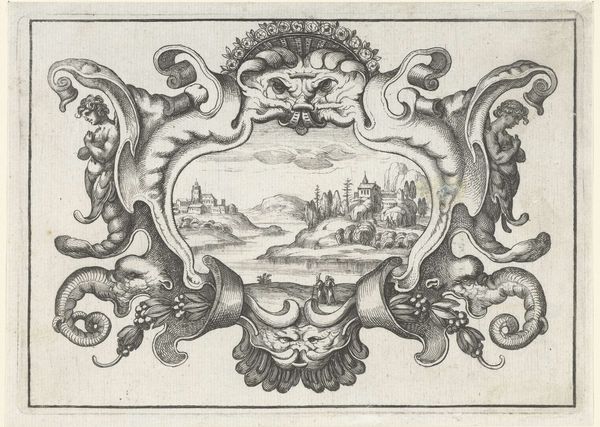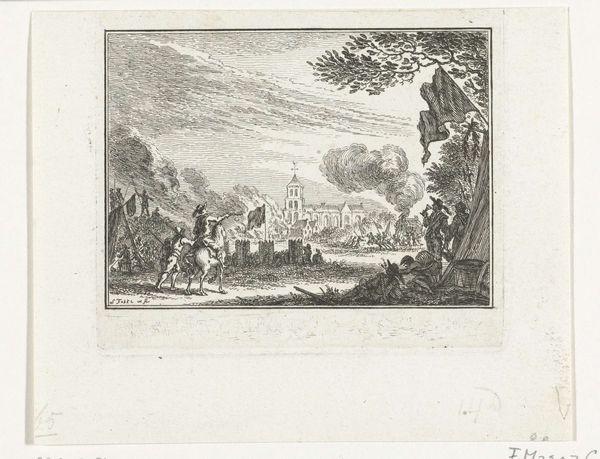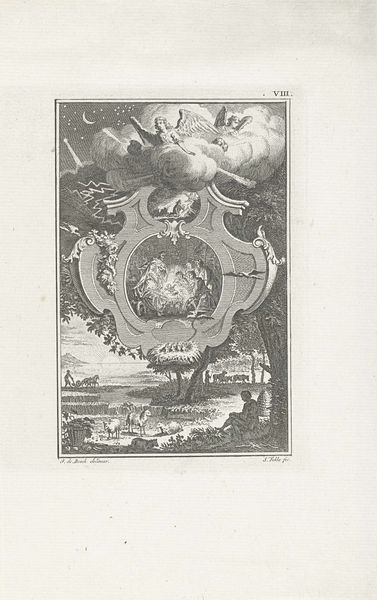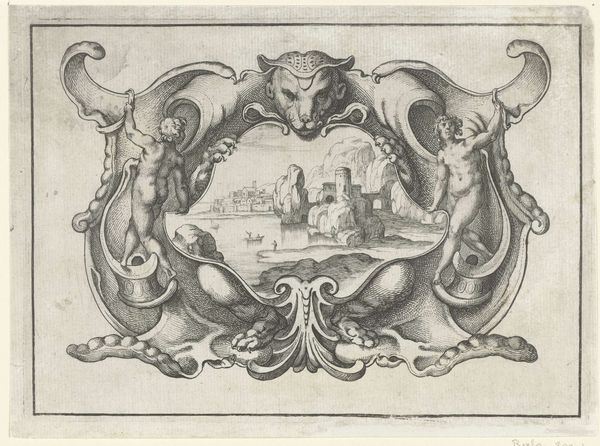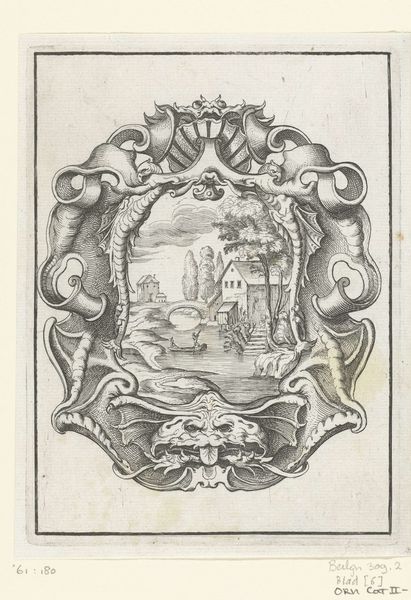
drawing, print, engraving
#
drawing
#
baroque
#
pen drawing
#
animal
# print
#
pen illustration
#
pen sketch
#
old engraving style
#
landscape
#
personal sketchbook
#
sketchwork
#
pen-ink sketch
#
line
#
pen work
#
sketchbook drawing
#
sketchbook art
#
engraving
Dimensions: height 71 mm, width 132 mm
Copyright: Rijks Museum: Open Domain
Editor: This is "Tetragram boven een landschap met dieren" from 1727 by Bernard Picart, a detailed engraving held at the Rijksmuseum. It strikes me as an attempt to capture both the earthly and the divine in one frame, with all these animals coexisting under that Tetragram cloud... What social or political issues might Picart have been addressing with this peculiar combination of imagery? Curator: That's a wonderful starting point. The seemingly disparate elements—the animals, the landscape, the tetragrammaton—actually speak volumes about the socio-religious context of the Enlightenment. How do you think Picart, creating this piece after the revocation of the Edict of Nantes, uses the animal kingdom to reflect religious tolerance, or perhaps its absence? Editor: So, you're saying the animals might be allegorical stand-ins? The engraving seems to be presenting the natural world beneath this divine presence, suggesting an order. The rising influence of scientific rationalism surely questioned traditional beliefs, and if I see a framed sketch today I can expect there to be an artistic motive, not so in Picart's time. Curator: Exactly. Consider the Baroque period’s emphasis on dramatic contrasts, as shown here: Picart is making a statement by depicting animals from around the world coexisting together in a seemingly harmonious setting, a pointed counter-narrative to the religious conflicts in Europe. What if Picart were staging his radical critique of the ruling status quo through symbolism? Editor: I never thought about it that way before! So, the engraving is a symbolic political critique disguised as a landscape with animals. All that detail suddenly carries so much more weight. Curator: Indeed. By blending the divine and the mundane, Picart offers a potent commentary on the era. It prompts us to interrogate what might look as natural or normal by thinking how many underlying assumptions it has. Editor: Thank you! It makes me wonder about all the subtle layers in artworks from this period that I've been missing!
Comments
No comments
Be the first to comment and join the conversation on the ultimate creative platform.
